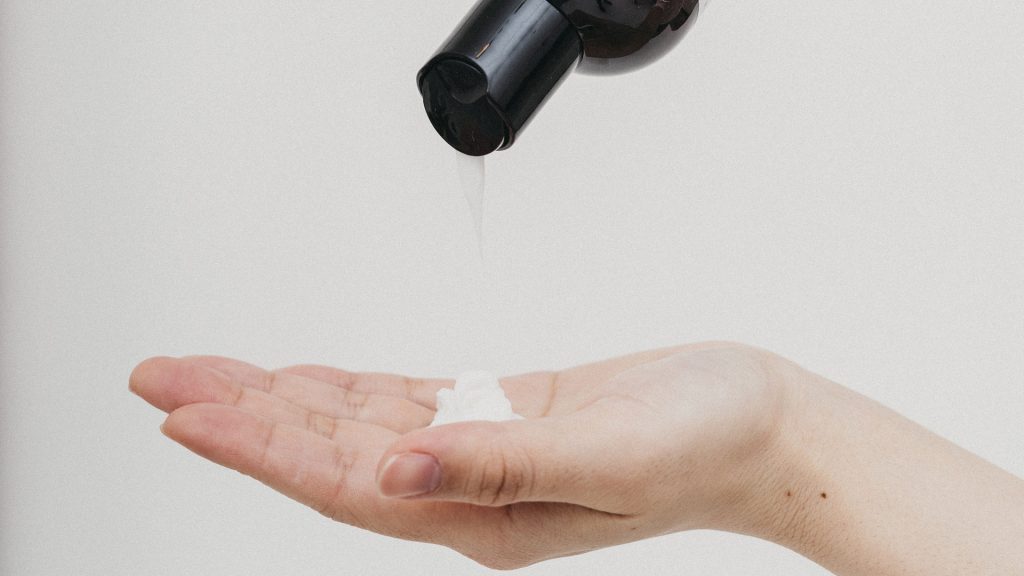9 harmful ingredients to avoid
When many shampoos contain elements such as sulfates, sodium chloride and silicones, all of which are harmful to you and the environment, knowing what ingredients are in your shampoo is the number one best way of looking after your hair, your health and nature.
In an effort to lead healthier lifestyles, lots of people are making the choice to eat organic, non-processed foods, and cooking meals from scratch so they know exactly what it is they’re eating. People are too becoming aware of ingredients in other household products and the effect they may be having upon themselves and the environment. For example, in the UK, face washes and body exfoliants can no longer contain plastic microbeads after they were found to harm marine life and ultimately being consumed by humans.
Microbeads have been spoken about at great length in the news, making it an obvious choice to avoid. But when it comes to shampoos, it’s not always clear what ingredients should be passed up and which are the better products to pick up.
Below you’ll find a list of nine of the most common harmful shampoo ingredients that you should avoid – and why.
1. Ammonium Lauryl Sulfate or Sodium Laureth Sulfate (SLES)
Sulfates are very strong detergents and great for stripping the oils from your hair. Sadly, that also means they rob your hair of its moisture. These cleaning agents are so harsh they can damage the hair, make it brittle, and increase frizz. They can also cause allergic reactions in people with sensitive skin.
2. Sodium Lauryl Sulfate (SLS)
Another detergent, this ingredient also creates the lathering foam action we love in our shampoo, body wash, toothpaste and cleaning products. But did you know that SLS’ can have mutagenic properties and other toxic effects on the human body? If your hair is in need of a bit more moisture, you might consider avoiding this ingredient in your next shampoo!
3. Parabens
You may already have heard people say to avoid parabens in shampoo. But has anyone told you why? To prevent mould and bacteria from growing in our cosmetics, parabens are used as a preservative. However, it’s believed that these parabens can enter our bodies through our skin. Likely due to a higher usage of cosmetic products, women have been found to have a higher concentration of parabens in their bodies than men. Once in our skin, parabens mimic the hormone oestrogen. Too much oestrogen in the body can trigger an increase in breast cell division and growth of tumours. Tip: look for the word ‘paraben’ within longer ingredient words.
4. Sodium Chloride
Yes, it’s the same one you learnt about in school; it’s salt. Plain old salt. Salt is added to shampoos and conditioners mainly to make a thicker consistency. Salt draws out moisture and can make an already sensitive scalp even drier and more itchy, which can eventually be a cause of hair loss.
5+6. Diethanolamine (DEA) and Triethanolamine (TEA)
DEA and TEA are emulsifying, fragrance and pH adjusting agents. They allow ingredients that are water-soluble and oil-soluble to blend together. DEA and TEA were associated with cancer in the liver of female mice, however, there are no proven links between the use of DEA and TEA and cancer in humans.
7. Formaldehyde
Formaldehyde and formaldehyde-releasing preservatives are used in many cosmetics to prevent mould and bacteria growing in water-based products such as shampoo. Formaldehyde can be absorbed through the skin and has been linked with allergic skin reactions, hair loss and some cancers. Tip: look for ingredient names such as quaternium-15, imidazolidinyl urea, diazolidinyl urea, and polyoxymethylene urea and Sodium hydroxymethylglycinate.
8. Alcohol
You will find alcohol in most hair-care products. And while some such as Cetearyl alcohol and Stearyl alcohol can actually help your hair retain moisture, most alcohols have a drying effect on the hair. Steer clear of any shampoo with alcohol listed as one of the first four ingredients. Tip: the bad alcohols to avoid usually have a “prop” in their name, like Isopropyl alcohol or propanol.
9. Silicones
Silicones create the temporary illusion of healthy hair. But as you use the silicone added shampoo more and more, this silicone builds up layer by layer, eventually weighing your hair making it appear greasy, dull and lacking shine. Tip: look out for words ending in ‘cone’ on the ingredient list, e.g. dimethicone.
Standing in a shop looking down a shampoo bottle ingredients list can be a daunting place to be. But now, armed with the tools to better spot those unwanted and harmful components, you can read on with confidence when you are next buying your shampoo.
At Blue Hairdressing, we have done the research and use brands, such as Paul Mitchell and Davines, which use only the best and finest ingredients in their products and do not test on animals. They share our stance on only using ingredients that are good for your hair, health and the natural world.
Take a browse through the Blue Hairdressing take home products we recommend, or speak to your stylist about our ranges when you are next in.
